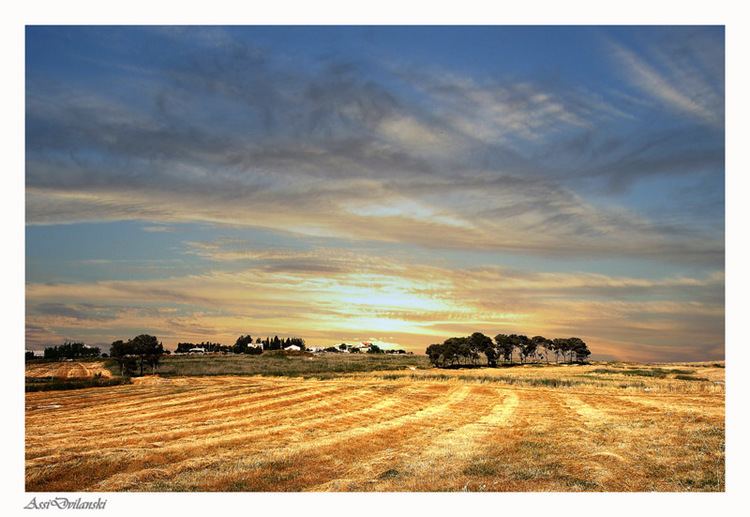Founded 1937 | Population (2015) 821 Local time Tuesday 7:42 PM | |
 | ||
Weather 13°C, Wind NW at 10 km/h, 89% Humidity | ||
Volunteers gathering kibbutz ein hashofet sep 2016
Ein HaShofet (Hebrew: עֵין הַשּׁוֹפֵט, lit. Spring of the Judge) is a kibbutz in northern Israel in the Hills of Ephraim. Located in the Menashe Heights region around 30 km from the city of Haifa, close to Yokneam, it falls under the jurisdiction of Megiddo Regional Council. In 2015 it had a population of 821.
Contents
- Volunteers gathering kibbutz ein hashofet sep 2016
- Map of Ein HaShofet Israel
- The harlem shake ein hashofet
- Etymology
- Classic era
- Ottoman era
- British Mandate era
- State of Israel
- Economy
- References
Map of Ein HaShofet, Israel
The harlem shake ein hashofet
Etymology
"Ein HaShofet," literally, Judge's Spring, was named in honor of United States Supreme Court Justice Louis D. Brandeis (1856-1941), who played a leading role in the American Zionist movement. There is a flowing spring nearby the kibbutz.
Classic era
A grave has been excavated here, yielding coins from Arcadius (395–408) and Theodosius II (408–450).
Ottoman era
During the Ottoman era a Muslim village called Jarah existed in the area. In 1596 the village appeared under the name of Ja'ara in tax registers, being part of the nahiya (subdistrict) of Sahil Atlit in the Sanjak (district) of Lajjun. It had a population of 4 households, all Muslim. They paid a fixed tax-rate of 25% on agricultural products, including wheat, barley, summer crops, goats and beehives, in addition to occasional revenues; the taxes totalled 2,000 akçe.
In 1882, the Palestine Exploration Fund's Survey of Western Palestine described Jarah as "a small village on the east side of the watershed, with four springs below it. There are rock-cut tombs, so that the place seems to be an ancient site." They further noted that the tombs were blocked up.
British Mandate era
In the 1922 census of Palestine conducted by the British Mandate authorities, Jaara had a population of 94, all Muslims, decreasing in the 1931 census to 62, still all Muslims, in a total of 14 houses.
Ein HaShofet was first settled on 5 July 1937 with members living on the nearby hill of Ja'ara for one year before moving to the final and current location of the kibbutz. Prior to the settling at Juara, the kibbutz's founders stayed for five years in Hadera, where the group was created by joining two Hashomer Hatzair groups, one from Poland (including Aharon Efrat, later a member of the Knesset) and one from North America, consisting the first Hashomer Hatzair group from North America. The kibbutz's foundation was a part of the Tower and stockade settlement drive.
The area was used by Arab "gangs" and the kibbutz members had to defend themselves against armed attacks on a nightly basis. This was in the middle of the 1936–1939 Arab revolt in Palestine, known to the Jews of the time as the "disturbances."
From 1938 onwards the hilltop site and stone house of Juara were used by the Haganah, the main Jewish underground militia, and later by the Israeli army and is now hosting a museum of the Haganah.
In 1945, Ein HaShofet had a population of 320, all Jews. It was noted that it was the village formerly named Ji'ara. Despite a lack of water and hilly difficult reclamation, in 1948, with a population of 450, they "were a successful mixed hill farm with orchards, dry cereals, dairy products, sheep herding and chicken farming."
State of Israel
During the 1948 Arab-Israeli war the Ein HaShofet villagers helped to defeat Kaukji's forces after their April 1948 attack on Mishmar HaEmek.
Economy
The main income source of Ein HaShofet today is its four factories, three of which are located in the kibbutz and one in the United States;
The kibbutz also retains some agriculture as a secondary industry as a source of income. Agriculture here encompasses both produce and livestock and is split into six branches
Ein HaShofet also has a long-standing ulpan course, with over 100 ulpan groups since 1951. Benjamin Urrutia is amongst the alumni.
